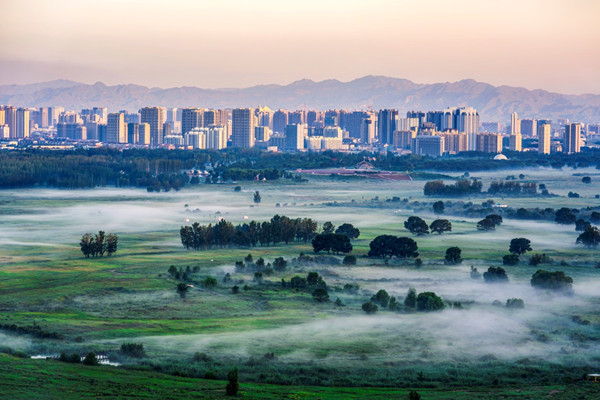Baotou seeks green approach to urban development

Baotou city in Inner Mongolia [Photo provided to chinadaily.com.cn]
The city of Baotou in North China's Inner Mongolia autonomous region is to increase its carbon reduction efforts and lead the way in green development, according to local media reports.
In recent years, the city has maintained steady economic growth, with the annual growth rate of the regional GDP standing at 6.5 percent.
In 2020, the per capita disposable income of urban permanent residents in the city hit 50,981 yuan ($7,973), 1.5 times that of 2012. The per capita disposable income of permanent residents in rural areas, meanwhile, was 20,710 yuan, 1.8 times that of 2012.
The city has sought to make structural adjustments, transformations and upgrades, and has vigorously cultivated and developed its strategic emerging industries, with an average annual growth of 10.2 percent in the city's industries above a designated size.
The added value of the five pillar industries of iron and steel, aluminum, equipment manufacturing, rare earths, and electric power grew at an average annual rate of 10.4 percent.
A slew of 30 mainly modern energy projects – worth 68.3 billion yuan – were signed at the first Modern Energy Industry Development Conference, which took place on April 28 in Baotou city.
Baogang Group, an iron and steel manufacturer based in Baotou, North China's Inner Mongolia autonomous region, delivered a press conference outlining its targets for peak carbon dioxide emissions and carbon neutrality.
After a comprehensive and systematic study, Baogang Group determined that it will strive to achieve peak carbon in 2023 and have the technological abilities in place to reduce carbon by 30 percent by 2030. It will then seek to reduce carbon emissions by 50 percent from the peak by 2042, and achieve carbon neutrality by 2050.
